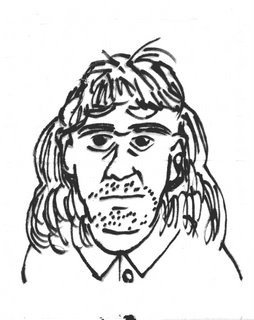
A toy camera that is.
I had seen many images made with it before I had even realized that they were all made with the same type of camera.
About eleven years ago I worked at a camera rental facility that did a majority of business with the students from the prestigious Art Center College of Design in Pasadena.
Photography students can sometimes pay up to $250,000 in tuition, equipment and supplies during a three-year stint at the school.
One day a student, Stephen Schauer the now director of the Getty Center Images came in and asked to use the shutter tester in the shop. He opened his bag and I noticed that he had about a dozen or so Holgas packed away.
He explained that because the cameras are so inconsistent in their functions that he decided to test the shutters then rate them according to speed.
In this day and age where cameras automatically focus based on what your retina sees and where images are auto exposed off of the light that is bounced off of the CCD chip
Enter the Holga All plastic except the metal spring that powers the shutter and the hot shoe.
The Holga out of the box is plagued with challenges that would drive a perfectionist to the brink of madness.
A simple small 2 by 3 piece of paper has the camera specifications on it. The camera comes with a single accessory, a nylon strap with clips that must be either wired or taped as to not lose the camera back.
There are two apertures to choose from f8 and f11 ( denoted on that camera by icons, a cloud and a bright sun respectivley), and there is only one choice of shutter speed at 1/100th of a second.
The camera shoots 120 format film, the same film that professionals use when shooting their $2000 Hasselblads.

Once the film is loaded the camera must be taped up so that light will not leak and expose the film and so that the back of the camera will not fall off while you are shooting.
The makers describe the lens as optical, but upon shooting you first roll of film you will realize that the lens is not color corrected, has flat spots and distorts perspective.
Care must be taken as to not expose the camera to high temperature, Holgas have been known to melt in the back seats of cars. Not a tragedy though, a new on can be had for a mere $14.99.
The camera is primitive and its components are just substantial enough to make an image this making the next evolutional link of the camera just one primordial step above a pinhole camera.

Despite all of the pitfalls of the Holga it is the images that the camera is able to create that makes the camera so special.

The images seem distant and surreal. The have a warmth and a depth to them that other cameras just seem to lack with their cold technological output.

The Holga is the descendant of another toy camera the Diana that came out in the mid ‘60s. The Diana was very similar to the Holga but it was a lot sturdier in its construction.
Just like the Holga the Diana create the same type of image that lacks sharpness.
If you look hard enough a Diana can be had through the classifieds in a photo publication or if you are lucky enough you can find one, but watch out the current market they can run around $60 to $100 dollars.





